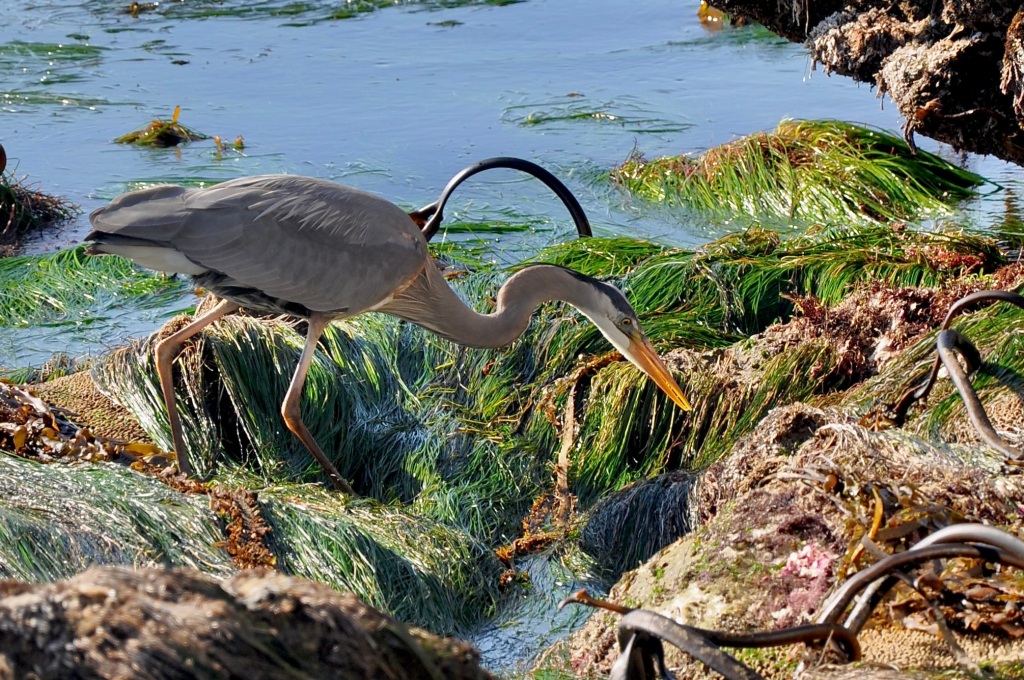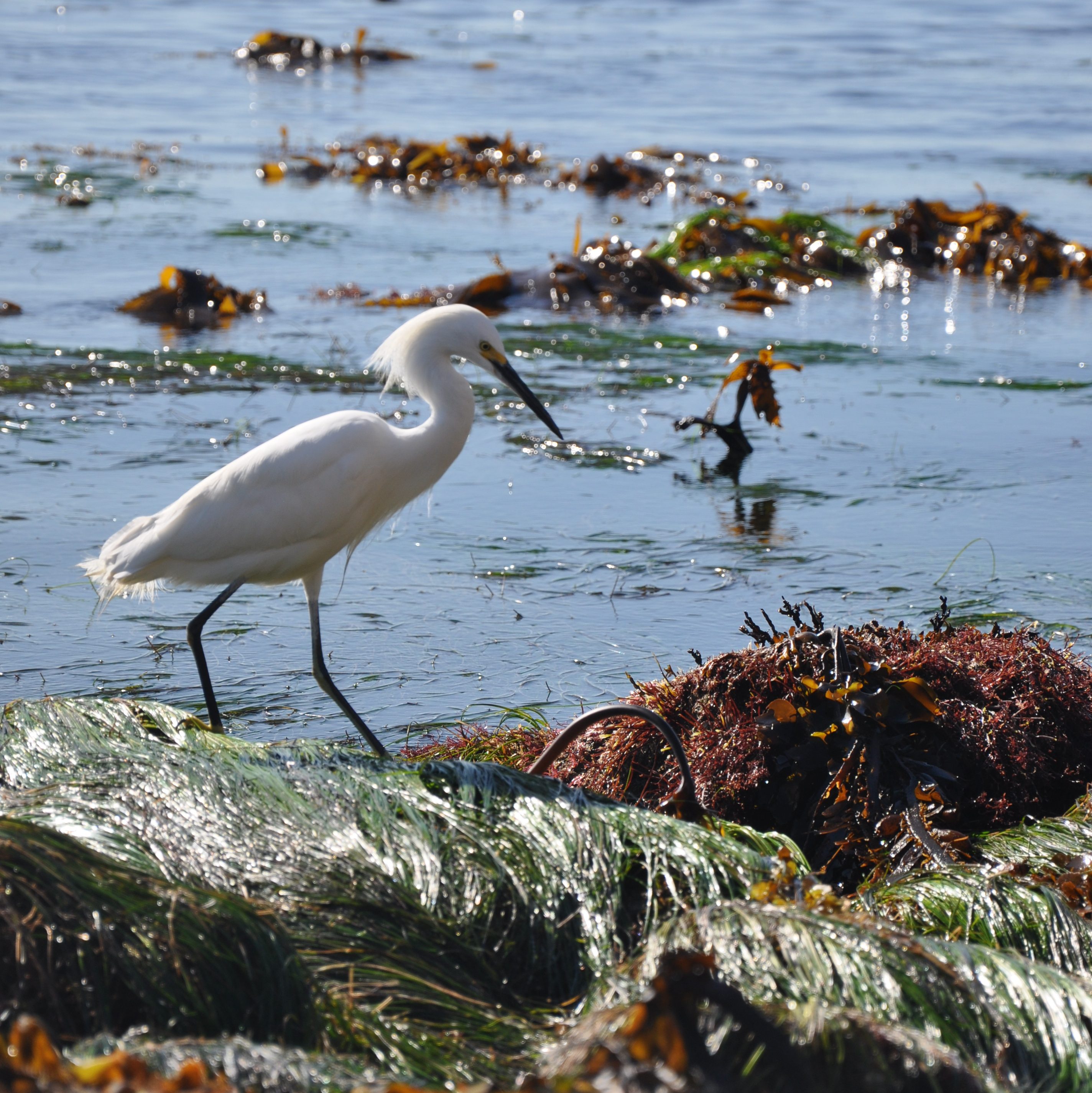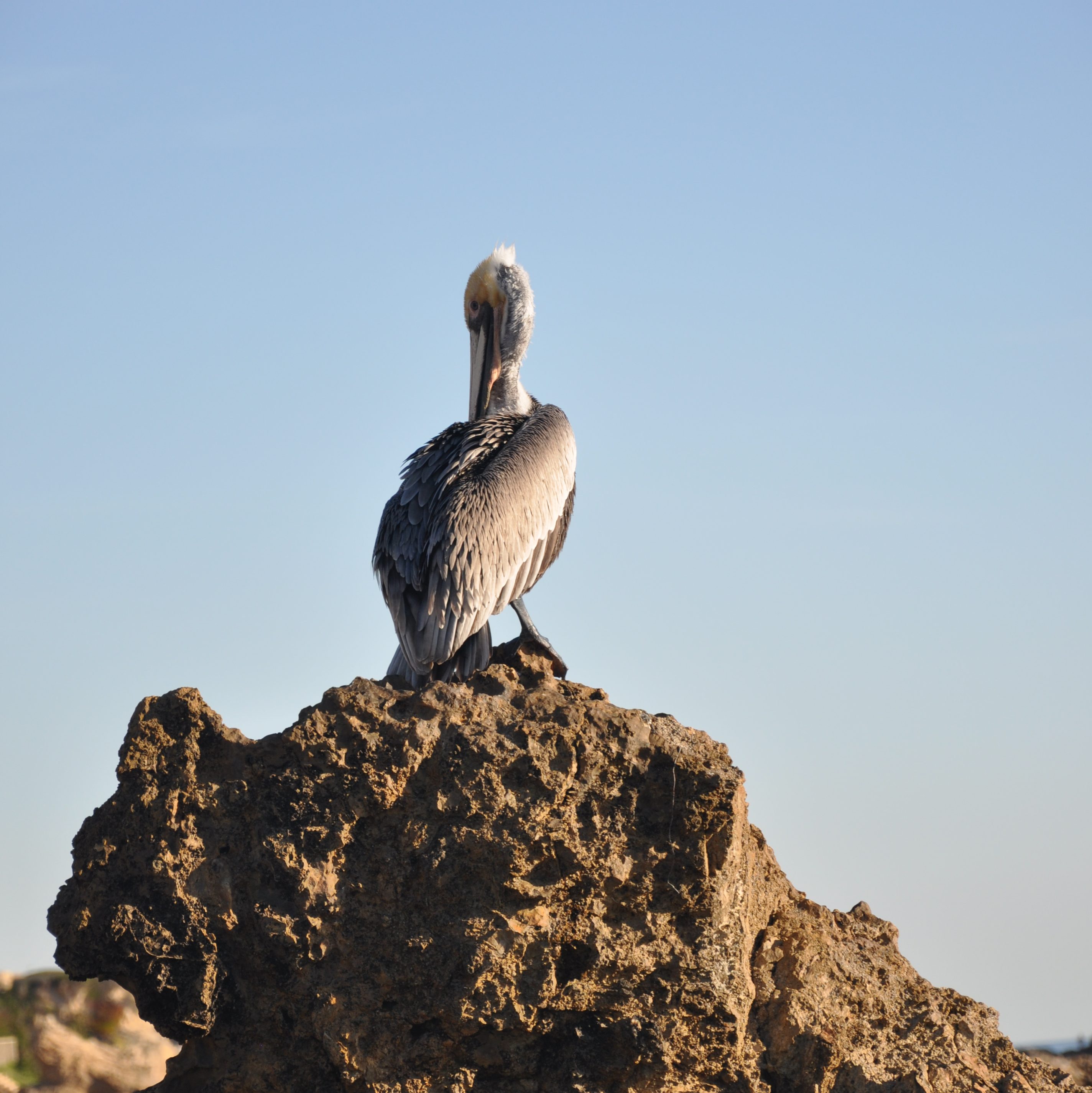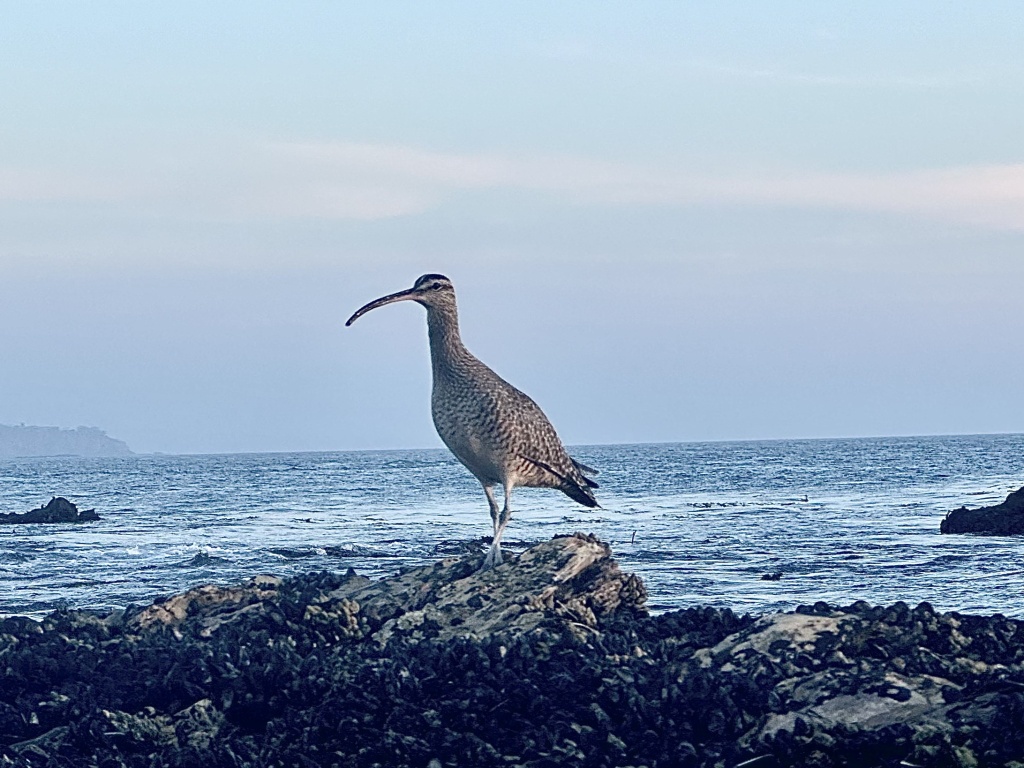Birds of California’s Rocky Intertidal

For many tidepoolers, the most exciting wildlife is at our feet, the tiny invertebrates that make the intertidal their permanent home. But out of the water, there is other wildlife just as interesting to watch and often much larger: birds. Many varieties of birds visit the intertidal to hunt, forage, rest, or escape predators themselves.
Below, you’ll find examples of common kinds of birds you might see visiting California’s rocky intertidal. In contrast to quiet bays and estuaries where typical shorebirds like terns, grebes, and ducks are found, the exposed rocky coast attracts only certain varieties of birds. They’ll likely be exploring the rocks with you, only gobbling up many of the small invertebrates they come across.
Herons and Egrets

With few exceptions, wading birds like sandpipers and silts don’t venture into the rocky intertidal as they feed on invertebrates buried in sand and mud. But tall herons and egrets hunt small on fish and seem to enjoy feeding in small tide pools where their prey has no escape. The small variety of California’s egrets, the snowy egret (Egretta thula), can often be seen picking its way through tide pools and striking expertly into the water to catch nursery fish. A great blue heron (Ardea herodias) is a less common sight while a black-crowned night heron is a treat for after-dark intertidal visits.
Cormorants

Sometimes seen in great numbers, cormorants are a common sight on rocky shores, their wings outstretched to dry out. Unlike most birds whose feathers have water-repelling oils, cormorants are diving birds that can’t take to the air when wet. When they tire from swimming, they’ll ride the waves to the rock shore and waddle up on the rocks to dry out and rest. You don’t see cormorants hunting in the intertidal but if you want to see one in action, they often dive close to shore, returning to the surface every few minutes.
Pelicans

Another resting visitor to the rock intertidal are Pelicans, brown (Pelecanus occidentalis) throughout the year and white (Pelecanus erythrorhynchos) in the winter in California. These birds are unmistakable with their huge, triangle beaks and long wingspan. Pelicans dive-bomb schools of fish from the air and can often be seen hunting in the same area as cormorants. Not very graceful on land like waders, they prefer to rest on rocks instead of sandy beaches where they are more vulnerable. Tall boulders and cliffs can be home to hundreds of pelicans. Anacapa and Santa Barbara Islands, part of the Channel Islands National Park, are known large colonies of brown pelicans (Pelecanus occidentalis) that nest on high cliffs and bluffs.
Seagulls

You almost can’t go to the beach in California without seeing seagulls. No matter what kind of shore you’re visiting or even if you’re on a boat, you’ll see these birds. While they are often seen as pests, many gulls are quite beautiful when they’re not stealing improperly stored food and play a vital role in the coastal ecosystem. Gulls will rest on rocky shores and sometimes hunt shore crabs, although they usually prefer to scavenge. There are a variety of species that have different markings and behaviors; don’t overlook these birds because they’re everywhere.
Sandpipers and Allies


Although most sandpipers and similar birds stick to sandy and muddy shores, a few will venture into the intertidal. Whimbrels (Numenius spp.), will pluck crabs off the rocks, and black turnstones (Arenaria melanocephala) prefer rocky coasts where they turn over rocks and algae with their bills to find prey underneath. Both these species are migratory, nesting in Alaska or elsewhere in the Arctic during the summers but spending the winter on California’s warmer coasts. Resident sandpipers like willets and godwits usually stick to sandy shores.
Spotlight bird: Black Oystercatcher
The black oystercatcher (Haematopus bachmani) is conspicuous but not nearly as common due to declining populations. Mostly black with a large red or orange beak, this bird pries mollusks from the rocks of the low intertidal, often flying a new few up to avoid crashing waves. Never straying far from the coast, these birds make their permanent home on the rocks, unlike most of the other birds on this list. One of my favorite tide pooling haunts has a resident black oystercatcher that can be seen on a small island of rock, inaccessible except at the lowest tides. Check out this video to learn more about this bird.

Categories
tags
Subscribe to the blog
Sign up to receive weekly emails with tide pooling information and guides so you never miss a post!

Leave a comment